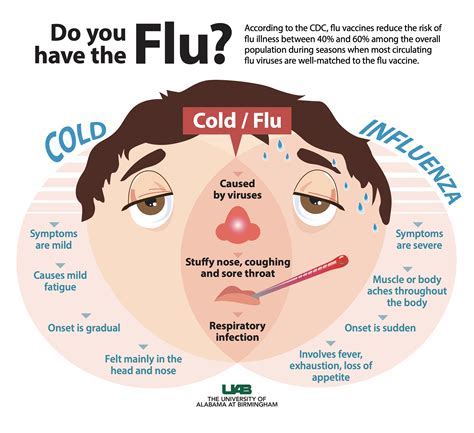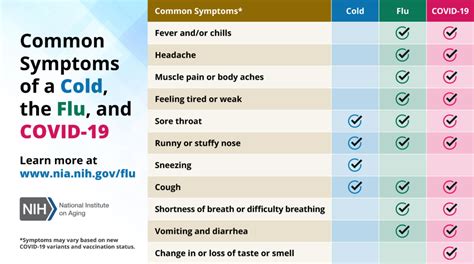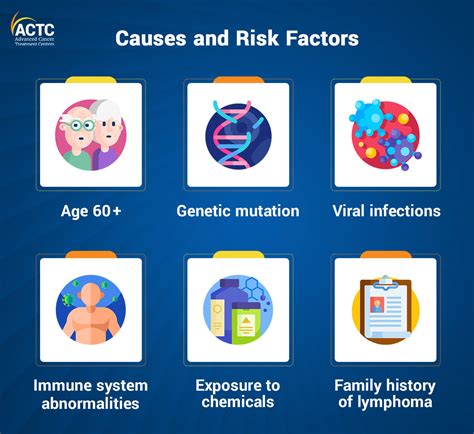Intro
The COVID-19 pandemic has brought about a significant shift in the way we perceive and respond to respiratory illnesses. With the flu season overlapping with the ongoing pandemic, it's essential to understand the differences between flu and COVID-19 symptoms. Both illnesses can present with similar symptoms, making it challenging for individuals to determine which one they might be experiencing. In this article, we will delve into the world of flu and COVID-19, exploring their symptoms, causes, and implications for public health.
The flu, also known as influenza, is a contagious respiratory illness caused by the influenza virus. It can range from mild to severe and can affect anyone, regardless of age or health status. COVID-19, on the other hand, is a respiratory illness caused by the SARS-CoV-2 virus. It was first identified in late 2019 and has since become a global pandemic, affecting millions of people worldwide. Both the flu and COVID-19 can have severe consequences, especially for vulnerable populations such as the elderly, young children, and those with underlying health conditions.
Understanding the differences between flu and COVID-19 symptoms is crucial for timely diagnosis, treatment, and prevention of complications. While both illnesses can present with similar symptoms, there are distinct differences that can help healthcare professionals and individuals determine which one they might be experiencing. In the following sections, we will explore the symptoms, causes, and implications of both the flu and COVID-19, providing a comprehensive overview of these two significant respiratory illnesses.
Flu Symptoms

Common Flu Symptoms
Some common flu symptoms include: * Fever * Chills * Cough * Sore throat * Runny or stuffy nose * Muscle or body aches * Headaches * Fatigue * Diarrhea or vomitingCOVID-19 Symptoms

Common COVID-19 Symptoms
Some common COVID-19 symptoms include: * Fever * Chills * Cough * Shortness of breath or difficulty breathing * Fatigue * Muscle or body aches * Headache * Sore throat * Runny nose or stuffy nose * Nausea or vomiting * DiarrheaComparison of Flu and COVID-19 Symptoms

Key Differences
Some key differences between flu and COVID-19 symptoms include: * Onset of symptoms: Flu symptoms typically develop suddenly, whereas COVID-19 symptoms can develop more gradually. * Respiratory symptoms: COVID-19 is more likely to cause shortness of breath or difficulty breathing, whereas the flu is more likely to cause a runny or stuffy nose. * Gastrointestinal symptoms: COVID-19 is more likely to cause nausea or vomiting, whereas the flu is more likely to cause diarrhea.Causes and Risk Factors

Risk Factors
Some risk factors for both the flu and COVID-19 include: * Age: Older adults, young children, and pregnant women are at higher risk for complications. * Underlying health conditions: People with underlying health conditions such as heart disease, lung disease, or diabetes are at higher risk for complications. * Weakened immune system: People with weakened immune systems, such as those with HIV/AIDS or undergoing chemotherapy, are at higher risk for complications.Prevention and Treatment

Treatment Options
Some treatment options for both the flu and COVID-19 include: * Antiviral medications: Antiviral medications such as oseltamivir or zanamivir can help treat the flu, while medications such as remdesivir or dexamethasone can help treat COVID-19. * Supportive care: Supportive care, such as rest, hydration, and over-the-counter medications, can help alleviate symptoms and support recovery.Implications for Public Health

Global Response
Some key aspects of the global response to the COVID-19 pandemic include: * Vaccination efforts: Vaccination efforts have been crucial in controlling the spread of COVID-19 and reducing the risk of complications. * Contact tracing: Contact tracing has been essential in identifying and isolating infected individuals, reducing the spread of the virus. * Public health measures: Public health measures, such as mask-wearing, social distancing, and travel restrictions, have been implemented to reduce the spread of the virus.What are the main differences between flu and COVID-19 symptoms?
+The main differences between flu and COVID-19 symptoms include the onset of symptoms, respiratory symptoms, and gastrointestinal symptoms. Flu symptoms typically develop suddenly, whereas COVID-19 symptoms can develop more gradually. COVID-19 is more likely to cause shortness of breath or difficulty breathing, whereas the flu is more likely to cause a runny or stuffy nose.
How can I prevent the spread of flu and COVID-19?
+Prevention is key for both the flu and COVID-19. Getting vaccinated against the flu and COVID-19 can significantly reduce the risk of infection and complications. Practicing good hygiene, such as washing hands frequently, avoiding close contact with infected individuals, and wearing a mask in public places, can also help prevent the spread of both illnesses.
What are the treatment options for flu and COVID-19?
+Treatment options for both the flu and COVID-19 include antiviral medications, supportive care, and hospitalization in severe cases. Antiviral medications such as oseltamivir or zanamivir can help treat the flu, while medications such as remdesivir or dexamethasone can help treat COVID-19. Supportive care, such as rest, hydration, and over-the-counter medications, can help alleviate symptoms and support recovery.
In conclusion, understanding the differences between flu and COVID-19 symptoms is essential for timely diagnosis, treatment, and prevention of complications. By recognizing the distinct differences between these two significant respiratory illnesses, individuals can take steps to protect themselves and their loved ones. We invite you to share your thoughts and experiences with flu and COVID-19 in the comments section below. Let's work together to stay informed, stay safe, and promote public health awareness.
